Information Technology > QUESTIONS & ANSWERS > Introduction to Data Communications (All)
Introduction to Data Communications
Document Content and Description Below
Introduction to Data Communications 1. Data communications and networking can be considered as a global area of study because: a. new technologies and applications emerge from a variety of countries... and spread around the world b. the technologies enable global communication c. the political and regulatory issues are exactly the same in every country d. a and b e. none of the above Answer: D 2. Which of the following is not true about a server? a. stores data and software that can be accessed by the client. b. is the pathway through which messages travel. c. in client/server computing they work together over the network with client computers to support the business application. d. can only perform one function on a network. e. stores documents and graphics that can be accessed from any Web browser. Answer: D 3. Networks that are designed to connect similar computers that share data and software with each other are called: a. client/server networks b. peer-to-peer networks c. host networks d. client networks e. local area networks Answer: B 4. The function of the file server is to : a. store data and software programs that can be used by client computers on the network. b. manage all printing requests from clients on the network. c. transfer e-mail messages to other servers on the network. d. store HTML documents for an Internet or intranet website. e. coordinate the communication of clients and servers on the network. Answer: A 5. A local area network is: a. a large central network that connects other networks in a distance spanning exactly 5 miles. b. a group of personal computers or terminals located in the same general area and connected by a common cable (communication circuit) so they can exchange information. c. a network spanning a geographical area that usually encompasses a city or county area (3 to 30 miles). d. a network spanning a large geographical area (up to 1000s of miles). e. a network spanning exactly 10 miles with common carrier circuits. Answer: B6. A backbone network is: a. a high-speed central network that connects other networks in a distance spanning up to several miles. b. a group of personal computers or terminals located in the same general area and connected by a common cable (communication circuit) so they can exchange information. c. a network spanning a geographical area that usually encompasses a city or county area (3 to 30 miles). d. a network spanning a large geographical area (up to 1000s of miles). e. a network spanning exactly 200 miles with common carrier circuits. Answer: A 7. Which of the following is not a property of a WAN: a. connects backbone networks and MANS. b. spans hundreds or thousands of miles c. provides data transmission speeds from 56Kbps to 10Gbps. d. connects a group of computers in a small geographic area such as a room, floor, building or campus. e. uses lease lines from IXCs like ATT, MCI, and Sprint. Answer: D 8. A(n) _________ is a LAN that uses the same technologies as the Internet but is open to only those inside the organization. a. WAN b. BN c. extranet d. intranet e. MAN Answer: D 9. A(n) _________ is a LAN that uses the same technologies as the Internet but is provided to invite users outside the organization who access it over the Internet. a. WAN b. BN c. extranet d. intranet e. MAN Answer: C 10. Which layer of the OSI model is responsible for ensuring that all packets sent are received by the destination station by dealing with end-to-end issues? a. Presentation Layer b. Transport Layer c. Physical Layer d. Session Layer e. application Layer Answer: B 11. Which layer of the OSI model is responsible for ensuring flow control so that the destination station does not receive more packets that it can process at any given time? a. Presentation Layer b. Transport Layer c. Physical Layer d. Session Layer e. application Layer Answer: B12. The ____________ layer of the OSI model is responsible for data format translation. a. session b. presentation c. physical d. application e. transport Answer: B 13. The fourth layer of the OSI model is called the __________ layer. a. network b. transport c. session d. data link e. presentation Answer: B 14. ___________ is an orderly close to a dialogue between end users. a. Session termination b. Physical bits c. Frame overhead d. Packet encapsulation e. Message encryption Answer: A [Show More]
Last updated: 1 year ago
Preview 1 out of 42 pages
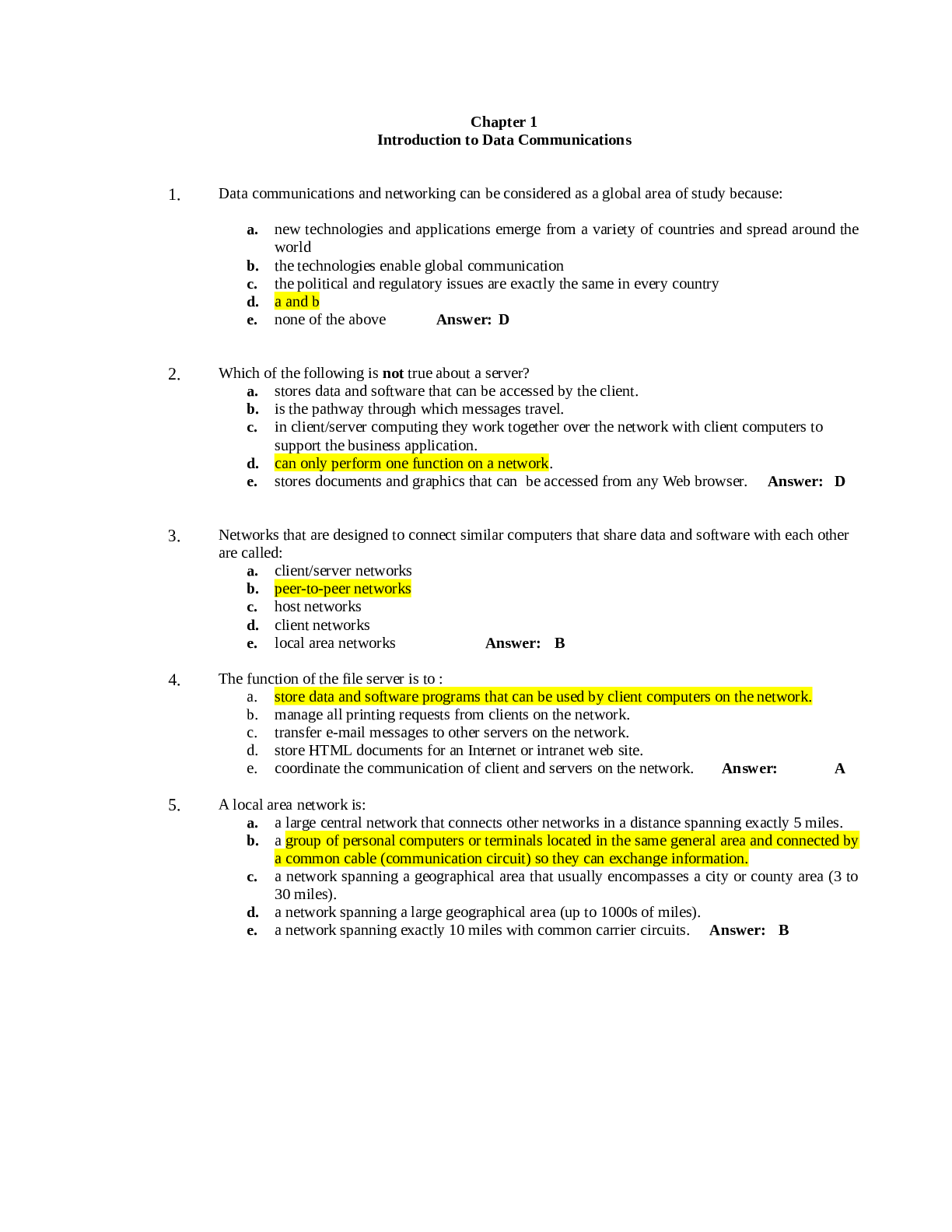
Reviews( 0 )
Document information
Connected school, study & course
About the document
Uploaded On
Aug 25, 2022
Number of pages
42
Written in
Additional information
This document has been written for:
Uploaded
Aug 25, 2022
Downloads
0
Views
39

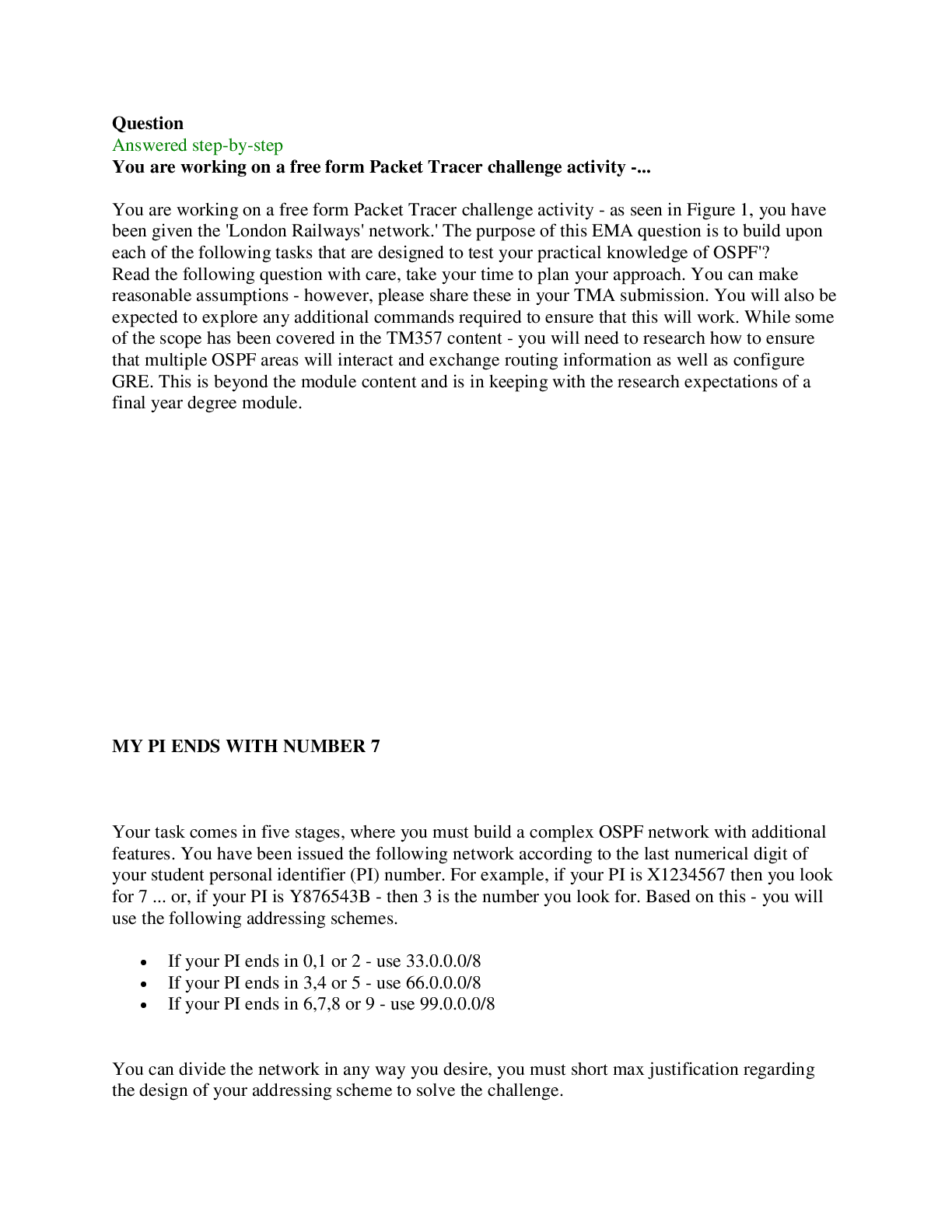



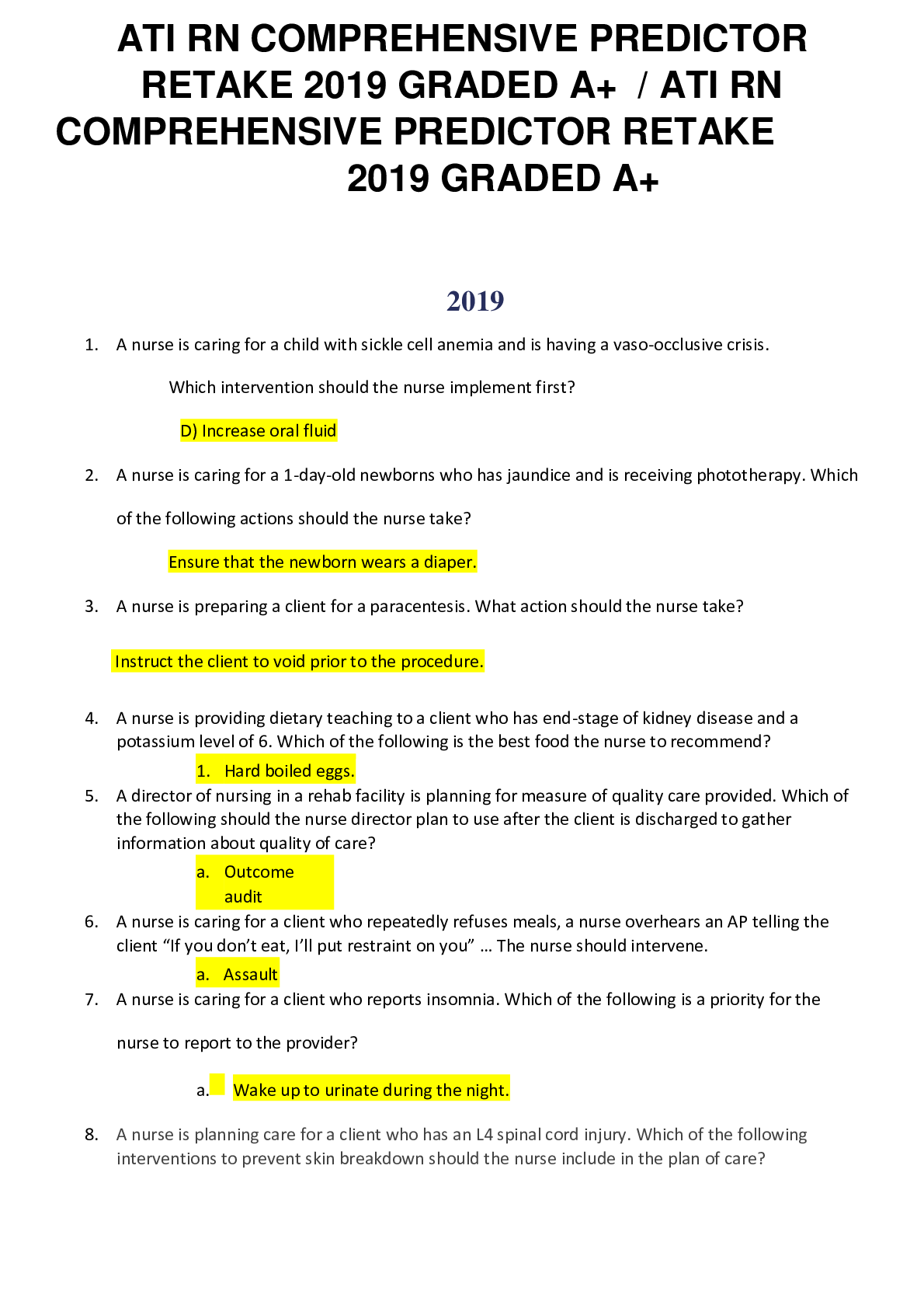




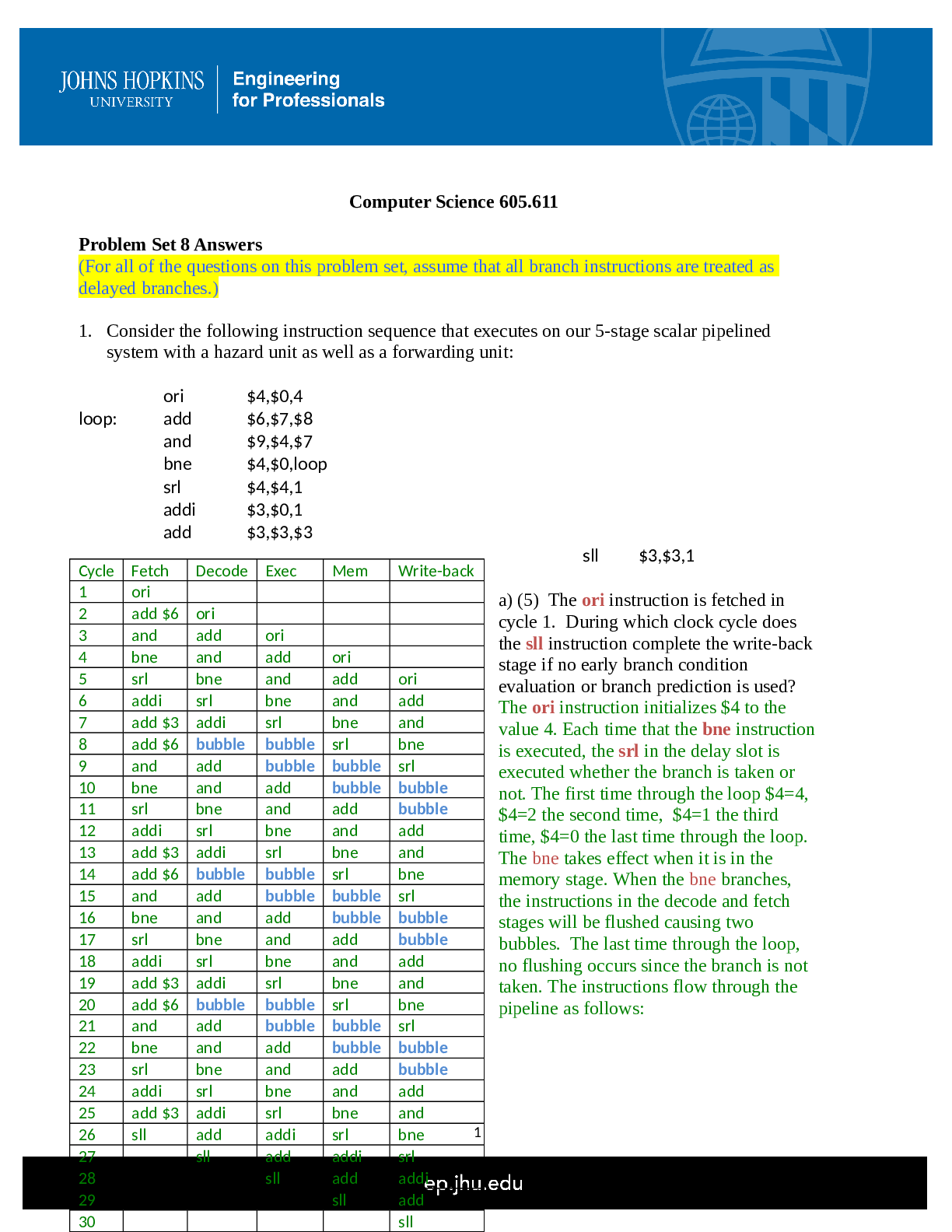
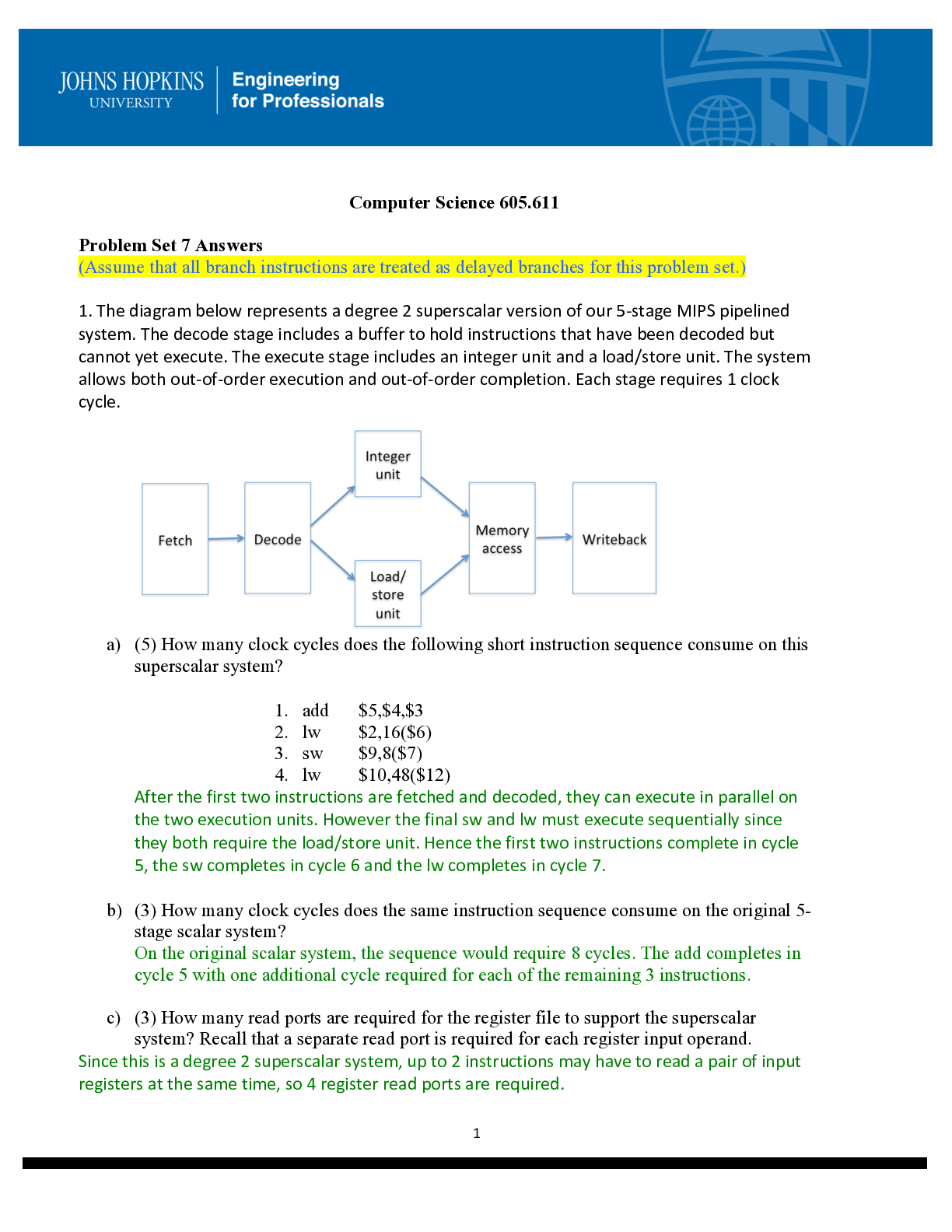

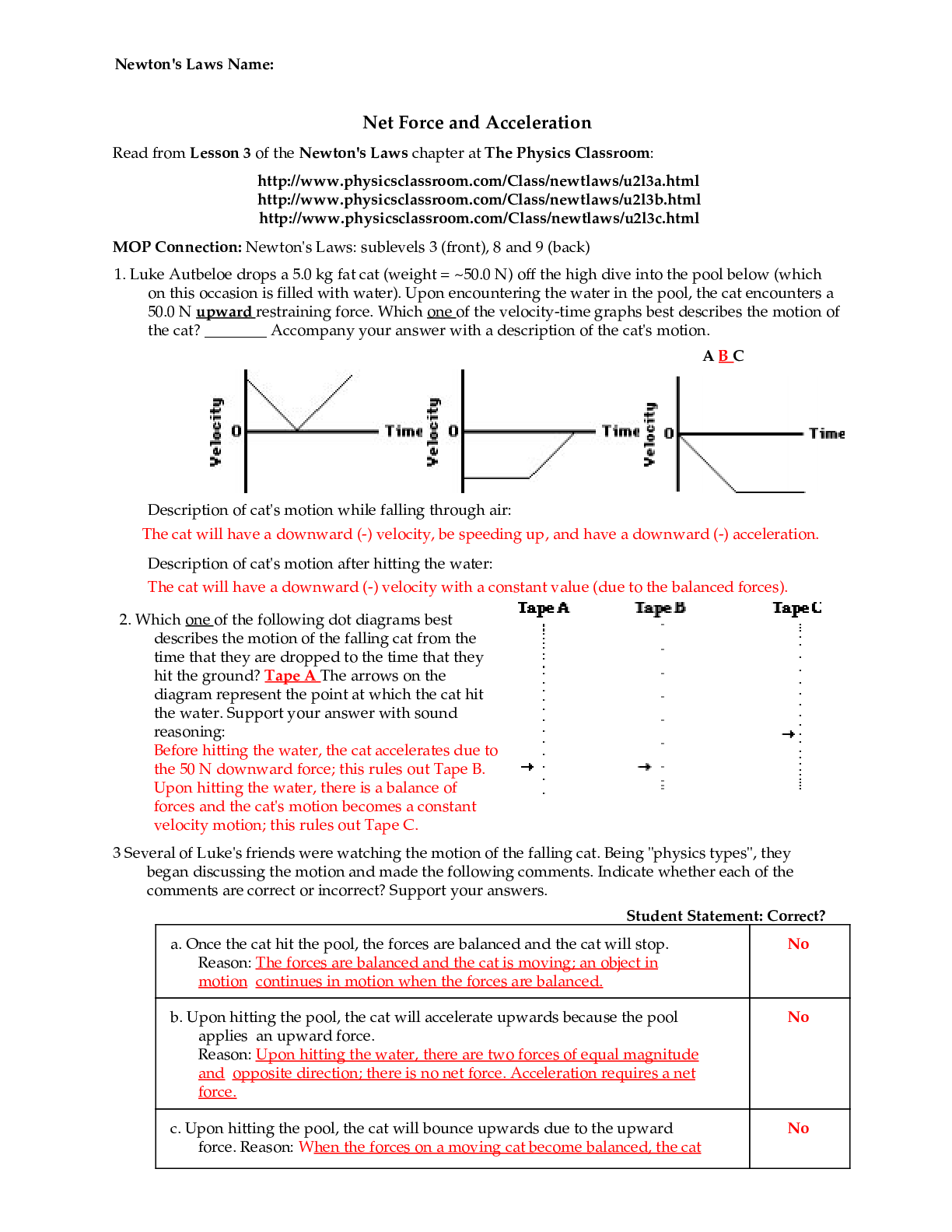

.png)




.png)

.png)

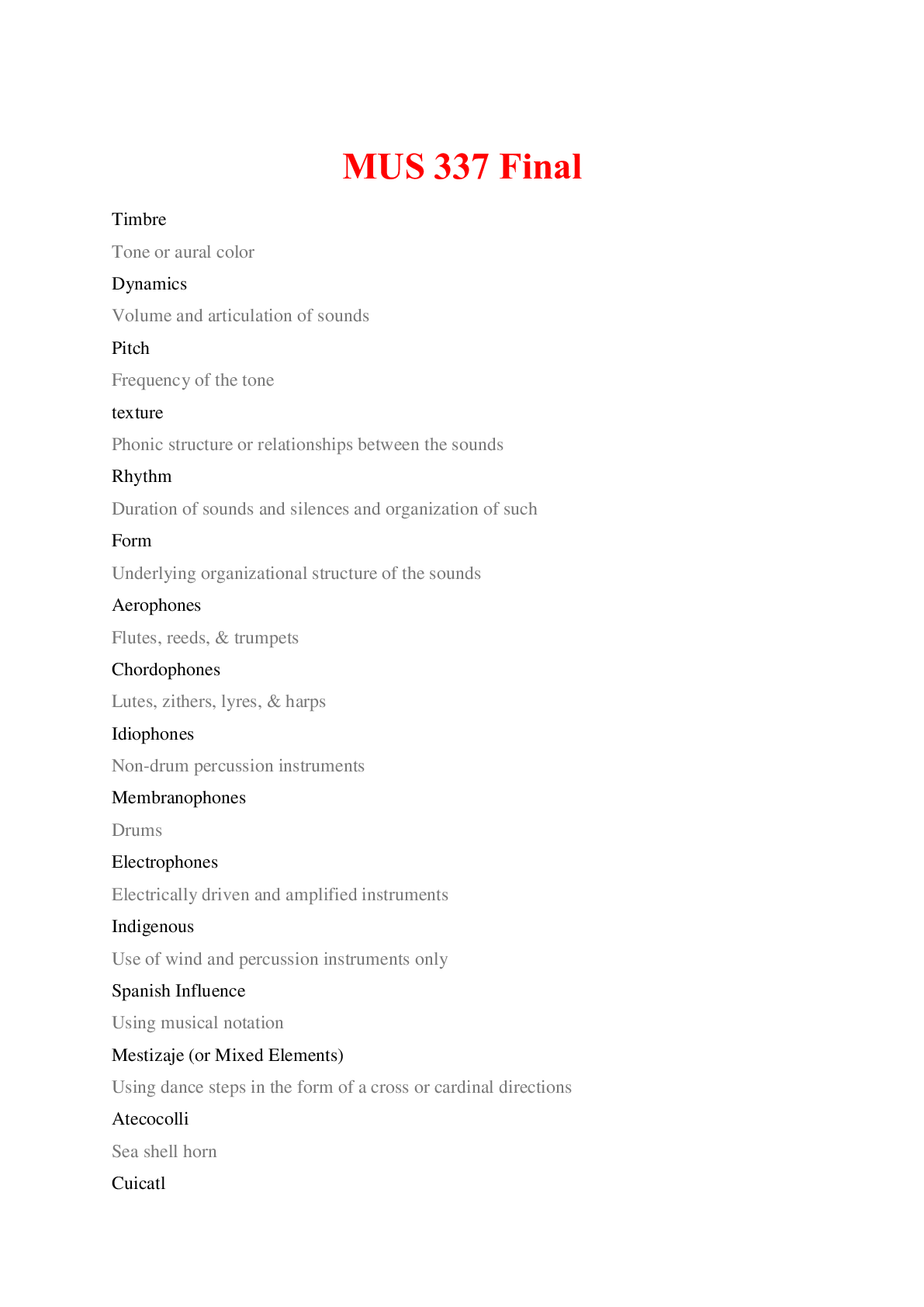

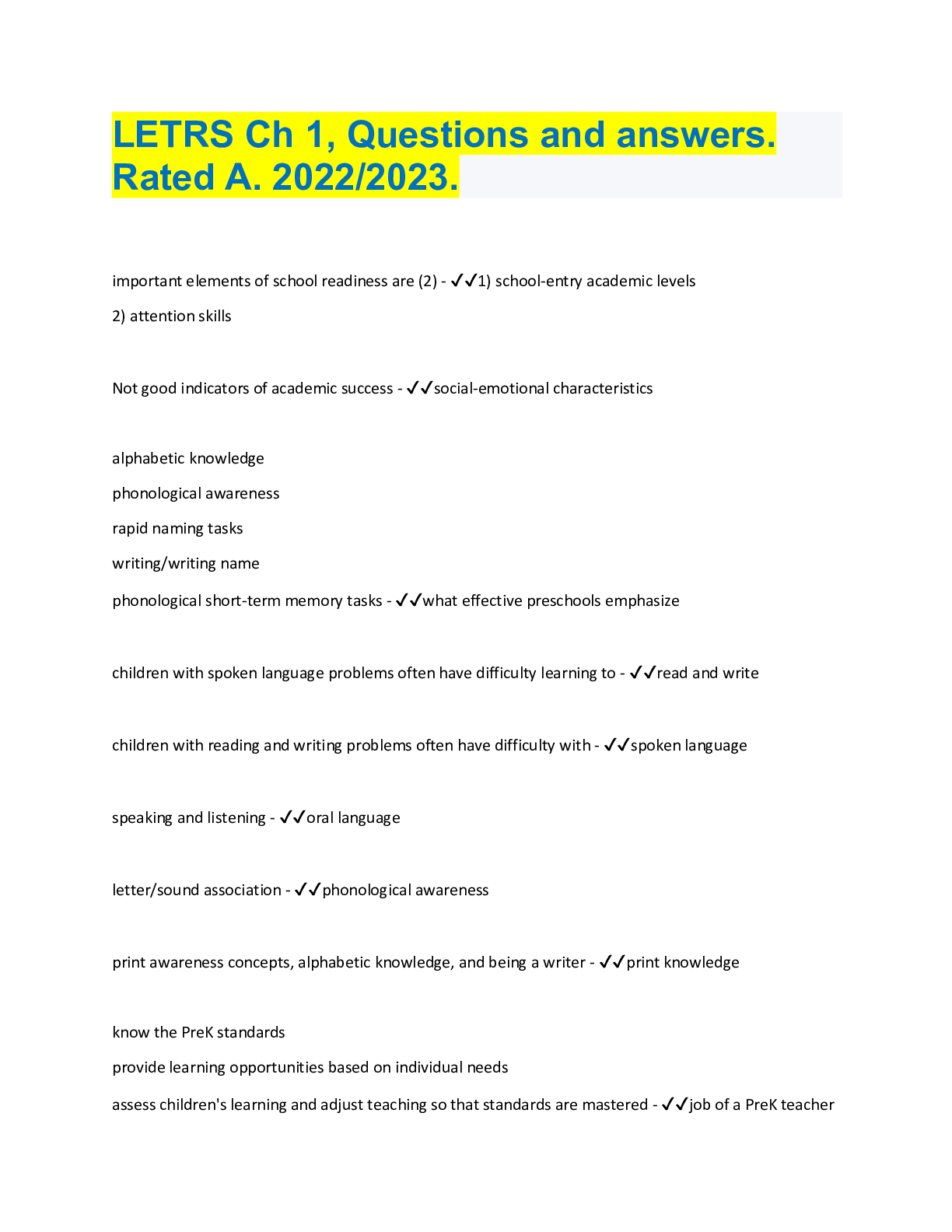
.png)
.png)

.png)




.png)
.png)

